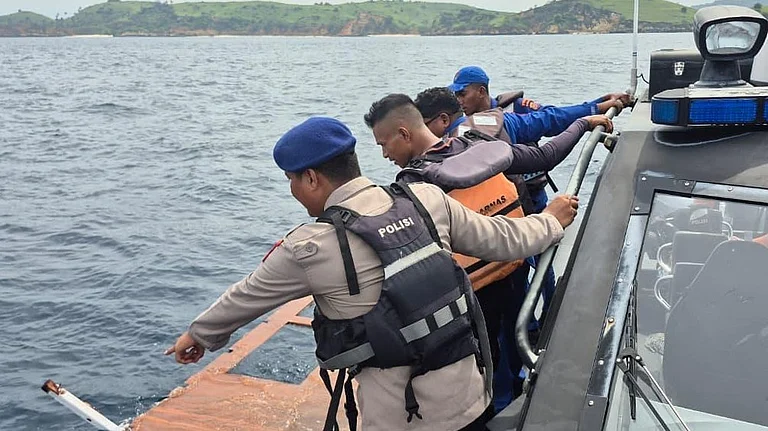Jog, who joined the IPS in 1953, was never one to rest on his laurels. Less than four years after retiring in 1987, he started a residential school at Chikhaldara, Vidarbha’s only hill station. He was immediately confronted by the water crisis in the area. The locals had to buy water despite an annual rainfall of 75 inches. The water crisis was so severe during the summers that Jog had to close down his school for a month during the first two years.
While looking for a solution, Jog recalled his childhood meeting with an old lady who collected rainwater falling on her cottage roof and used it all year round. In 1997, convinced that this could bail the school out of its water shortage, Jog installed corrugated sheets and the necessary piping on the 6,000-sq ft roof of the school hostel and collected as much as 3,00,000 litres of water in six specially built tanks. Basic calculations suggested that even this was less than a third of what could have been collected.
The school started saving enough water for the dry months. Even eight months after the monsoons, the water was found to be potable. More importantly, it cost only Rs 2.25 per litre, which was far more economical than the prevalent supply systems. With this water already catering to the 500-odd residents of the nearby Pandhari village, Jog wants to extend the concept to more villages.
Initially there were very few takers. Many did not believe that harvesting rainwater was a solution or that the water could be retained for months together. Jog had to literally prove that what he was mooting made sense. He set out on his task despite the sceptics.To harvest rainwater draining off the asphalt roads, Jog constructed simple gabion embankments (a structure made of stone strung together with a wire mesh to hold water) in the space between a 15-kilometre stretch of the Morshi-Warud highway and the neighbouring fields. Undeterred by those who doubted his single-handed effort, Jog got the Central Road Research Institute to certify that it was safe to construct these structures four feet below the road level to discourage the water’s capillary action from damaging the surface. To prevent flooding of the fields, the gabions were raised 2 feet above the ground.
Each of the 100 structures cost Rs 2,000. Barring some monetary help from the state, Jog himself bore most of the expenses. "Even with four major showers, these structures can collect 22 crore litres of water," he says. "And even if we are left with 10 crore litres after evaporation, it can still work wonders." Within a year, water in 82 nearby wells has surged by 8-10 feet. "With 11,000 kilometres of roads in Maharashtra alone, the idea holds immense promise," says Jog, who has now obtained permission to pilot a similar project along railway lines.
Earlier this year, Jog constructed bunds across streaming nallahs at three locations in the Satpura hills. Each bund costing Rs 75,000 has resulted in 150-metre-long embankments storing up to 1 crore litres of water. By next year, Jog plans to extend this to 20 new locations. He only hopes that others will help him in his efforts. As he points out: "Like us, social organisations and MLAs can also raise money and easily replicate this initiative in their areas." Jog can be contacted at: Jog Bungalow, Camp, Amravati, Maharashtra-440602 Tel: (0721) 2662611 or (022) 22041704
























